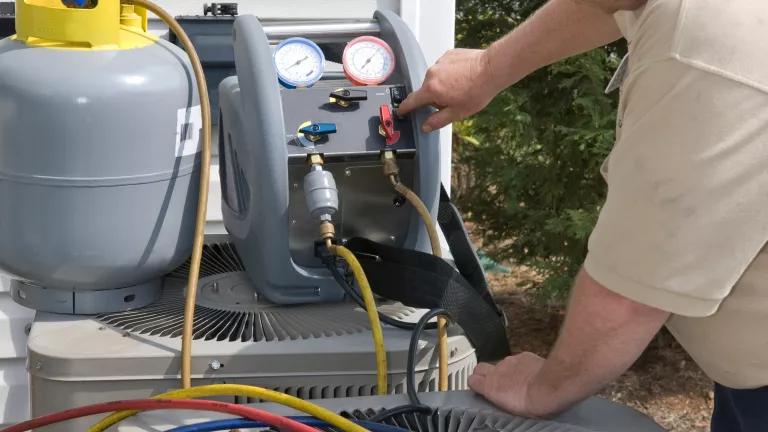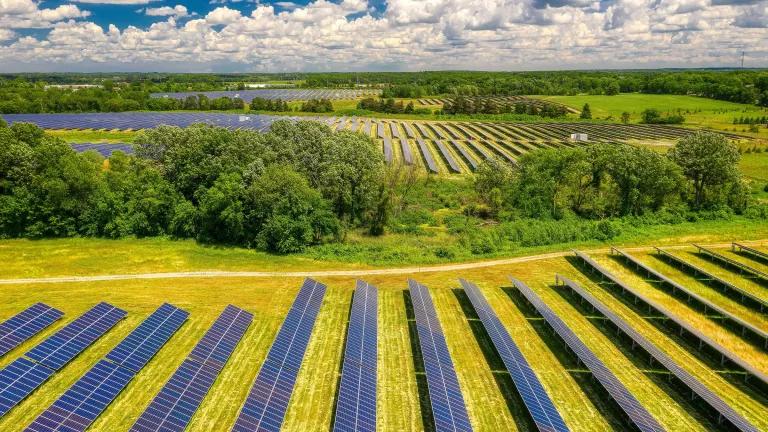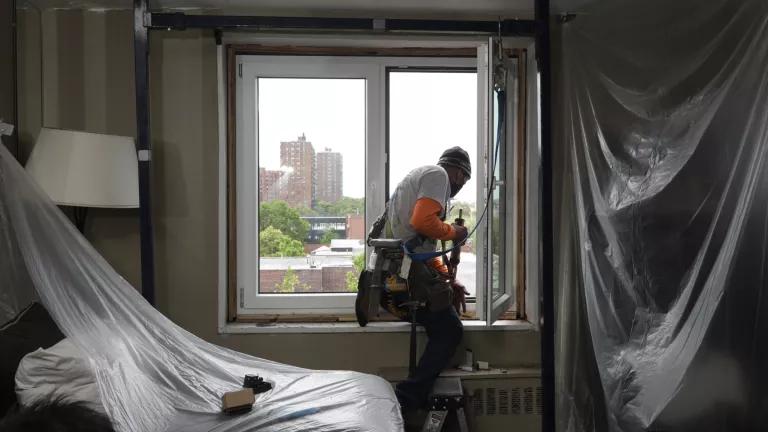5 Ways EPA Can Strengthen its New Proposed HFCs Regulations
There are five important ways to improve the rules' outcomes for climate and communities' health.

NRDC has urged the Environmental Protection Agency (EPA) to strengthen its new regulations to phase down hydrofluorocarbons (HFCs), the super-potent climate pollutants used as refrigerants, propellants, fire retardants, and other applications.
NRDC submitted public comments to the agency last week for proposed regulations setting up the framework to cap and reduce HFCs under the American Innovation and Manufacturing (AIM) Act, the HFC phasedown bill enacted late last year. The regulations determine our national HFC ‘baseline,’ formalize the AIM Act reduction schedule, establish HFC allowances, and set requirements for reporting and recordkeeping, market monitoring and enforcement, allowance transfers, and more.
NRDC heartily agrees with EPA’s projection that moving beyond HFCs will bring extraordinary climate benefits, which EPA estimates to be equivalent to 4.7 billion metric tons of CO2 of avoided emissions through 2050, or about the same as the entire United States’ power sector for three years. EPA further estimates a net benefit of $283.9 billion over that time period including benefits to climate, health, and society and minus any industry compliance costs (which are actually mostly negative—i.e. savings). It’s urgent work—the AIM Act requires this first set of regulations to be made final in September—and we’re pleased with EPA’s fast start.
But there are five important ways to improve the rules' outcomes for climate and communities' health.
1. Delete the exemption for imported products containing HFCs
For one, the AIM Act requires importers to have HFC allowances for all HFCs imported into the United States. EPA, however, has proposed to exempt from that requirement all the HFCs that are imported inside air conditioners and other appliances made abroad, as well as in other products including insulating foams and aerosol sprays. This is a big loophole: our research found that some 30 percent of central air conditioners and heat pumps are imported, way more than a decade or two ago. Each year the U.S. imports products filled with HFCs capable of harming the climate as much as 6.5 million cars do in a year. All these HFCs would get a pass under EPA’s proposed system.
EPA contends these products haven’t been regulated in the past and it lacks baseline data on imports – but none of the spaghetti sticks to the wall. Our comments show that the AIM Act covers all HFC imports and that the needed data are available.
2. Place firm guardrails on HFC production allowance trading
In its proposal, EPA rightly raises the issue of potential public health risks from toxic byproduct releases around HFC-producing manufacturing facilities. In general, the expectation is that these will fall as domestic HFC production falls, which is scheduled for a dramatic 85% reduction over the coming 15 years.
The AIM Act allows transfers of HFC production among HFC producers, which could impact the pace of these reductions in particular communities. In some limited instances, it may even be possible for total HFC production to increase at a particular plant. Guardrails are needed to prevent increased releases of toxic substances into any community.
To safeguard against any such increases, NRDC recommends that EPA adopt firm rules of the road governing transfers of HFC production allowances from facility to facility. Prior to approving any transfer, EPA should require the proponents of the transfer to demonstrate that it will not result in increasing toxic releases at either facility (on a total mass, not emission rate, basis). EPA should also assign HFC production credits at the facility level, not the company level, to make sure internal company transfers must follow the same rules. We offer additional suggestions for how to encourage further pollution reductions, too.
3. Halt toxic releases likely associated with HFO-1234yf production
It’s also important to protect communities against toxic exposures associated with manufacturing climate-friendlier alternatives to HFCs, a problem EPA’s proposal acknowledges is possible but does not address. In our comments we report to EPA that we have uncovered evidence of significant, concerning toxic releases coming from a facility manufacturing an HFC alternative, HFO-1234yf, which is used in car air conditioners. We found that one of the two major U.S. plants making HFO-1234yf has been releasing loads more toxic substances since bringing commercial-scale HFO-1234yf production online at the beginning of 2019. The plant is run by The Chemours Company in Corpus Christi, Texas.
The toxic substance being released in greatest quantity, carbon tetrachloride (CTC), has been illegal to release for many years because it harms the stratospheric ozone layer and is a potent carcinogen, among other health harms. Another chemical being released, ethylene, may contribute to communities’ exposures to ethylene oxide and formaldehyde, both of which are also carcinogens. Releases of hydrogen fluoride (HF) and hydrochloric acid (HCl)—a major issue for workers that may also be exposed prior to release—are also elevated.
Our comments call on EPA to promptly halt these releases and we offer several legal approaches EPA can take to do so. For example, the Clean Air Act’s ozone layer provisions already ban CTC production except where the CTC will be completely consumed in making another chemical. These large CTC releases into the air violate that so-called “feedstock” exemption, making this CTC production and release illegal. EPA also has discretion under the AIM Act itself to withhold HFC production allowances from companies or facilities engaged in bad behavior, and we urge it to do so where needed. EPA has further options to curb CTC and the other toxic emissions under the Clean Air Act’s hazardous air pollutant provisions.
4. Cut back proposed extensions for HFC-23 byproduct destruction
We urge EPA to stand firm behind its proposed ban on emitting into the atmosphere HFC-23 – the most dangerous HFC of all, with GWP 14,800—co-produced in the making of other industrial gases. EPA has proposed a compliance deadline of October 1, 2022. Just three months after that, the largest current HFC-23 emitter by far, Chemours, has voluntarily committed to eliminating its HFC-23 releases. Chemours has made HFC-23 commitments before, however, so EPA is wise to put this provision into law. Despite Chemours’s pledge to control these emissions by the end of next year, EPA has proposed to allow a 6-12 month extension period beyond the October 2022 deadline. That’s 3-9 months longer than even Chemours claims to need. NRDC urges EPA to drop any extension, particularly any longer than 3 months.
5. Stand firm on banning disposable cylinders, tracking and enforcement, and data transparency
There’s a lot EPA gets right in the proposed regulation. On many of these fronts, we urge EPA to stand firm against pushback from various industry opponents. Issues at stake, for example, include a ban on disposable cylinders of HFCs, developing a robust enforcement and HFC tracking regime, and public release of HFC-related data in the same form EPA receives it. Members of industry have been pushing back, especially on the last few points, because they view many of these requirements as cumbersome and disruptive. But all of these requirements are crucially important to EPA’s running an effective HFC phasedown, and EPA shouldn’t back down now after coming this far.
To learn more, check out NRDC’s comments here.



